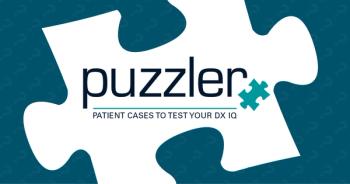
Study: Even low lead exposure in early childhood tied to academic decline
Children with blood lead levels below CDC intervention thresholds had lower test scores through adolescence, a new study showed.
A large cohort study published in JAMA Network Open examined the impact of early-life blood lead levels on academic achievement, even at levels below the Centers for Disease Control and Prevention’s (CDC) current reference value of 3.5 µg/dL. The study, which analyzed more than 300,000 children in Iowa, found that even small increases in blood lead concentration were associated with consistent declines in standardized math and reading scores across grades 2 through 11.1,2
Study background and objectives
Although public health guidelines emphasize that no level of lead exposure is safe, the CDC uses reference values to identify children for further testing or intervention. In 2021, the CDC lowered the blood lead reference value from 5.0 µg/dL to 3.5 µg/dL. However, the evidence regarding the impact of blood lead levels below this new threshold has been limited.2
This study, led by George L. Wehby, MPH, PhD, aimed to assess whether blood lead levels under 3.5 µg/dL are associated with adverse academic outcomes and how these associations compare with outcomes observed at levels equal to or above the CDC threshold.
Methods and population
Researchers linked birth certificate records from 1989 to 2010 for children born in Iowa to state-mandated lead screening results and standardized test scores from grades 2 through 11. The academic assessments included the Iowa Tests of Basic Skills, Iowa Tests of Educational Development, and Iowa Assessments. In total, the study analyzed data for up to 305,256 children, resulting in 1.78 million child-grade observations for reading and 1.77 million for math.
Among these children, 37.7% had lead levels below 3.5 µg/dL, with a mean of 2.3 µg/dL. The mean age at lead testing was 1.9 years. The analysis controlled for sociodemographic, maternal, and school-level characteristics.
Findings
A 1-unit increase in blood lead level below 3.5 µg/dL was associated with a decline of 0.47 points in math and 0.38 points in reading scores on a national percentile rank scale. For children with lead levels at or above 3.5 µg/dL, a 1-unit increase was associated with declines of 0.52 in math and 0.56 in reading scores.
These declines were observed consistently across grades. For example, among children with blood lead levels below 3.5 µg/dL, the largest decline in math was seen in grade 9 (−0.71 points), and the largest decline in reading occurred in grade 2 (−0.62 points). Similar patterns were seen for children with higher lead levels.
Implications and recommendations
According to the authors, these findings show that academic performance can be negatively affected by lead exposure at levels currently not recommended for intervention by public health authorities. “A 1-unit increase in lead levels in the range currently considered low for further interventions was associated with worse academic performance throughout school grades comparable to that for lead levels in the range recommended for additional interventions,” Wehby wrote.
These results suggest the need to reevaluate current public health thresholds and consider lowering the blood lead reference value to better reflect the risks associated with so-called low-level lead exposure.
Study limitations
The study’s strengths included a large, population-based sample and the linkage of multiple state-level data sources. Limitations included potential residual confounding because of a lack of data for factors such as household income or housing quality, in addition to the inability to measure the specific effects of lead-related interventions.
Conclusion
This study adds to a growing body of evidence that even modest increases in early childhood blood lead levels can have lasting negative effects on academic achievement. "Reconsidering and potentially lowering current blood lead reference values for intervention may be needed to better address the associations of low-level lead exposures with cognitive and academic outcomes," concluded the authors.
References:
1. Wehby GL. Early-life low lead levels and academic achievement in childhood and adolescence. JAMA Netw Open. 2025;8(5):e2512796. doi:10.1001/jamanetworkopen.2025.12796.
2. Lead poisoning. World Health Organization. September 27, 2024. Accessed June 4, 2025. https://www.who.int/news-room/fact-sheets/detail/lead-poisoning-and-health
Newsletter
Access practical, evidence-based guidance to support better care for our youngest patients. Join our email list for the latest clinical updates.







